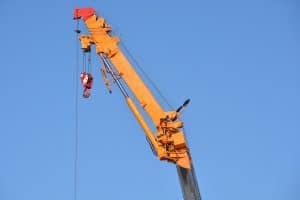 Any job working with heavy equipment demands only the very best in parts and supplies. Sourcing less than quality parts could cost people their lives.
Any job working with heavy equipment demands only the very best in parts and supplies. Sourcing less than quality parts could cost people their lives.
This sentiment applies especially to cranes. Choosing the correct crane hoist can make or break your job site.
Hoists come in many different varieties, and you need to know what will work best for your situation.
To make sure disaster never strikes your job site, we’re bringing you our guide on how to pick the right crane hoist.
What’s a Crane Hoist, Exactly?
Most people get the general concept behind a hoist, but don’t know what they’re actually all about.
Yes, hoists move things up and down. That’s the very basic concept; moving something heavy from one place to the next.
However, hoists vary widely in size and application. What you’d use in your garage isn’t the same as what you’d use on a job site.
Since we’re talking about cranes, our focus is on electronic and air powered chain hoists.
Chain hoists give crane operators the strength they need to move heavy objects, often in high danger situations.
They also specialize in vertical lift, resisting grime, are portable, and modular.
Today, we’ll touch on the two main types of chain hoists and why they’re the perfect choice for your next crane hoist.
Electric Chain Hoist
Electric chain hoists work well for lifting large objects in small spaces. That definition isn’t pretty, but it’s true.
The electric motors provide operators with extreme accuracy without sacrificing lifting power or capacity.
If you choose an electric crane hoist, remember to specify what voltage your crane can handle. Mismatching voltages won’t allow your hoist to work with your crane.
Air Powered Chain Hoist
Air powered hoists are the strongest of the heavy lifting chain hoists. Whatever you throw at them, they’ll lift and move.
These hoists are specifically for faster, longer, and more intensive lifting. Their air powered nature also makes them practical where electricity may pose safety hazards (near water).
However, air hoists do require an air compressor. This means extra equipment brought on site, and extra money.
Choosing Your Crane Hoist
Choosing the correct hoist for your crane depends solely on the work you’ll undertake. Every environment is different, and so the correct hoist varies.
We recommend talking to your hoist supplier to get their opinion on the matter. They’ve heard all manner of situations and likely have insight into your unique circumstances.
Before we end our guide, there is one more crane hoist option we should mention. When chain hoists can’t bear your load, wire rope hoists are the answer.
Large cranes commonly used on construction sites are prime candidates for the wire rope hoist.
Choosing the correct crane hoist is vital to the success and safety of your job site. Don’t bet on a hunch when there are lives on the line.
Use our guide to make the correct decision for your next crane hoist. Don’t forget to contact us if you need any help.

